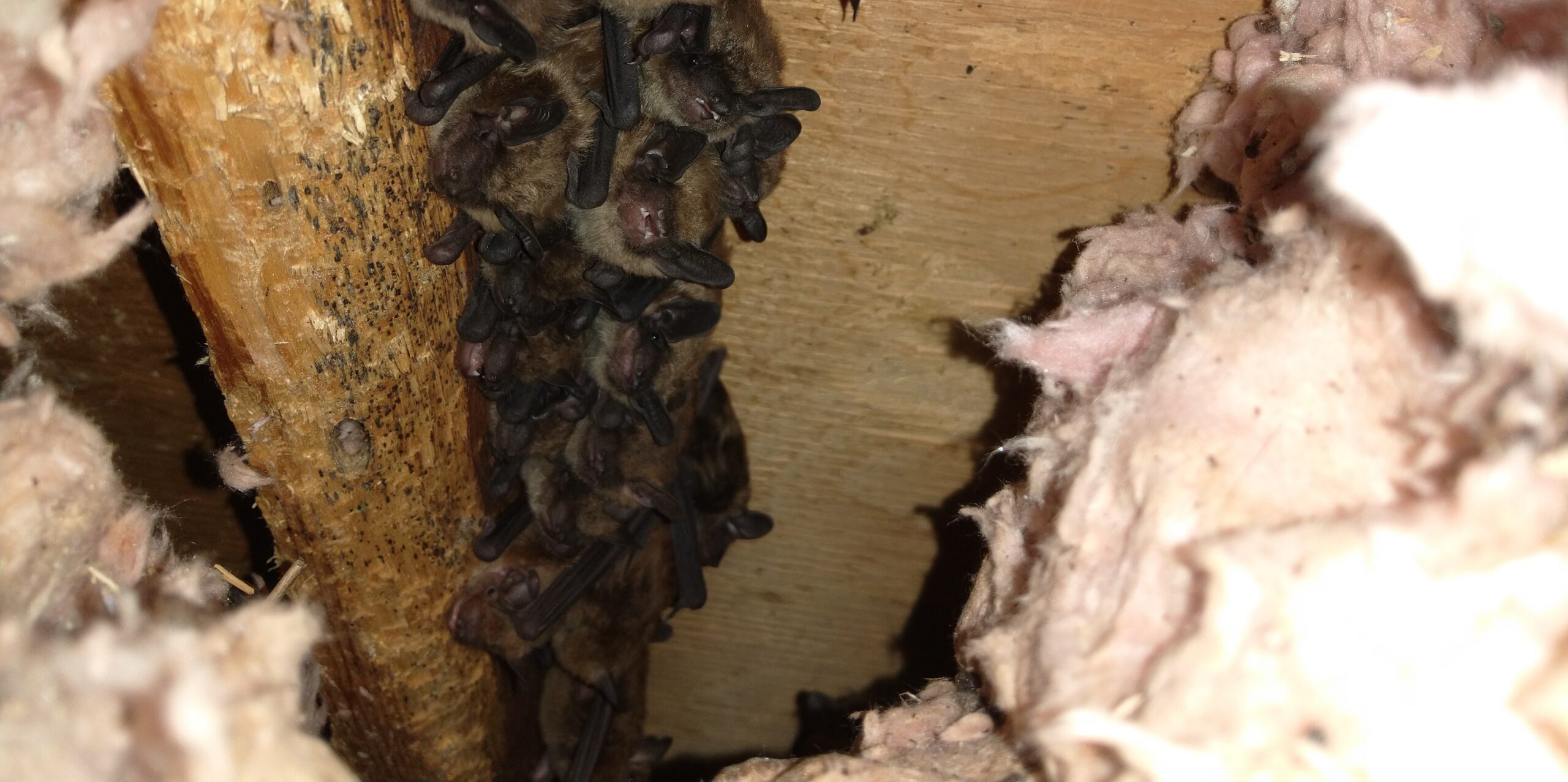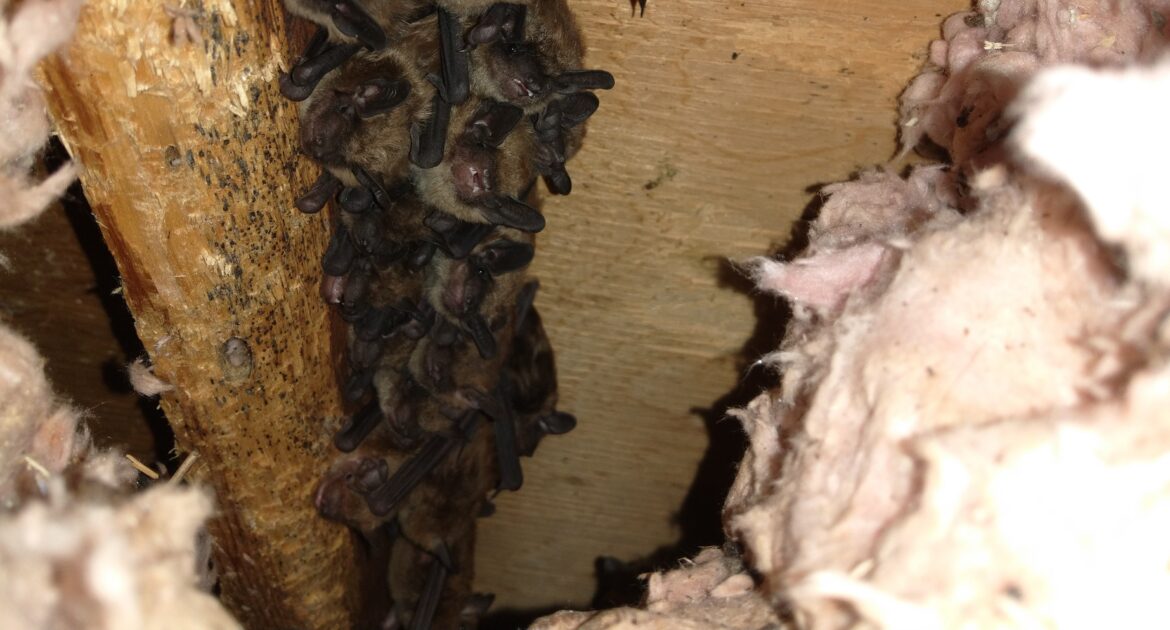If you’re wondering whether you’ve got uninvited guests in your attic, detecting bats in attic spaces can sometimes be challenging, but essential. Bats are fascinating creatures, but when they roost in your home, they can cause extensive damage and even pose potential health risks. Denver, with its charming old homes near landmarks like Sloan’s Lake or Wash Park, often sees them taking refuge in warm attics. Recognizing the signs of bats in your home early can save you time, stress, and money by preventing further damage.
Below, we’ll go over how to spot signs of bats in your home, the behaviors they display, and how Denver wildlife removal services like ours can help you keep your attic bat-free.
Detecting Bats in Attic
Detecting bats in attic spaces often starts with keen observation. Homes in Denver are particularly prone to infestations because their architecture often includes tiny entry points, perfect for bats to squeeze through. Look for these signs to check if they’ve made their way into your attic.
- Unusual squeaking or fluttering sounds: At dusk or dawn, bats become active and you may hear squeaking, scratching, or the soft flutter of wings from your attic.
- Bat droppings (guano): One of the most telltale signs, guano is small, pellet-like, and piled in particular spots below their roosting areas. Left unchecked, guano can damage insulation and pose health risks.
- Smell of ammonia: Piles of droppings emit a strong, almost pungent odor similar to ammonia. If this scent wafts down from your attic, it warrants a closer look.
- Grease marks or stains around entry points: When bats enter or exit your attic, their bodies often leave smudges or stains. Check for these marks around attic vents, gables, soffits, or chimneys.
- Seeing bats leaving at dusk or early morning: Colorado’s nocturnal bats leave their roosts to hunt for insects at dusk. If you notice bats exiting your attic at that time, it’s time to act.
Houses frequently provide suitable entry points for bats. Areas like loose shingles, unscreened attic vents, or gaps as small as a dime are all an open invitation. Inspecting these areas closely is a critical first step in identifying an issue.
Signs of Bats in Your Home
Signs of bats in your home aren’t always confined to the attic. They can show up in peculiar ways all over the house. Here are some indicators of their presence inside your living space.
- A stray bat indoors: If you spot a stray bat flying in your home, it’s typically lost from its colony in the attic.
- Stains or smudges on walls and ceilings: Bats moving within walls can leave faint discolorations caused by natural oils on their fur.
- Unexplained noises: Scratching or scurrying inside walls often signals bats, especially in older Denver homes.
- Droppings around windows or walls: Bats may leave guano near entry or exit points, especially around windows or chimneys.
If you suspect bats in your home, checking the attic remains essential. Attics provide warmth and safety for bats, making them their favorite hiding spot. Misinterpreting these signs or hesitating to act quickly can allow colonies to expand and worsen the situation. Preventive vigilance is key.
Denver Bat Removal Services
When it comes to removing bats from your home, the process requires expertise and humane practices to ensure both your safety and that of the bats. Denver bat removal services specialize in identifying and sealing entry points while adhering to strict local wildlife laws.
Steps We Take at Skedaddle:
- Comprehensive attic inspection: Our trained technicians will assess common entry points such as rooflines, vents, and chimneys. We also investigate guano and signs of activity throughout the space.
- Humane exclusion process: Using one-way doors allows bats to exit your home but prevents their return. This ensures no bats are harmed during the process.
- Sealing entry points: Tiny gaps, cracks, and other access points are sealed using durable materials to keep bats out for good.
- Cleanup and decontamination: Bat droppings must be handled carefully. Our team removes guano and disinfects affected areas to eliminate health risks and odor.
- Follow-up inspections: To ensure long-term effectiveness, our team conducts follow-up inspections to verify that the exclusion measures are holding up and no new entry points have formed. This proactive approach guarantees your home remains bat-free.
It’s worth noting that bat removal can only be safely conducted outside of birthing or hibernation seasons, typically during late summer or early fall. Timing matters, so don’t delay if you suspect you have bats.
Why Detecting Bats Early Matters
Detecting bats in attic spaces and addressing the issue promptly is crucial for several reasons. Bats left unchecked pose health and structural risks to your property. Here’s why you should act quickly.
- Prevent extensive property damage: Guano and urine build-up can erode wooden beams and corrode metal surfaces over time. Large colonies can ruin insulation.
- Avoid health risks: Bat guano can harbor bacteria that cause histoplasmosis, a fungal respiratory infection. Additionally, rabies transmission is a possibility from direct bat contact.
- Mitigate rising energy costs: Compromised insulation due to guano or scratches leads to more energy loss, increasing heating or cooling bills.
- Preserve wildlife and abide by local laws: Bats are federally protected in many areas, including Colorado. Humane removal ensures compliance with these laws as well as the ethical treatment of animals.
Early detection and engagement with Denver bat removal services provide a long-term, practical solution to safeguarding your home and health.
Why Professional Bat Removal Is Essential
Professional bat removal is crucial for ensuring the safety, health, and compliance of homeowners dealing with bat infestations. Experts possess the tools and knowledge required to identify entry points and remove bats humanely, minimizing stress to the animals and disruption to your home. Attempting a DIY solution often increases the risk of exposure to harmful diseases, such as histoplasmosis, found in bat droppings. Additionally, untrained methods can lead to improper sealing, allowing the problem to persist or worsen over time.
Working with licensed bat removal specialists ensures that local wildlife laws are followed, including the protection of federally safeguarded bat species. Professionals also provide preventative measures, such as exclusions, to avoid future infestations. Their thorough approach not only resolves the immediate issue but also safeguards your property’s structure and energy efficiency. Choosing professional bat removal services is a reliable way to protect both your family and local wildlife effectively.
Take Action With Skedaddle Today
Don’t wait until hearing squeaks or spotting guano turns into a costly clean-up job. If you suspect signs of bats in your home, reach out to Skedaddle for expert bat removal services. Our team specializes in humane, thorough, and permanent solutions tailored to Denver’s unique conditions.
Whether you’re near City Park or further out in Littleton, we’re here to help protect your home while preserving local wildlife. Call our trusted team today and take the first step toward a peaceful, worry-free attic.




